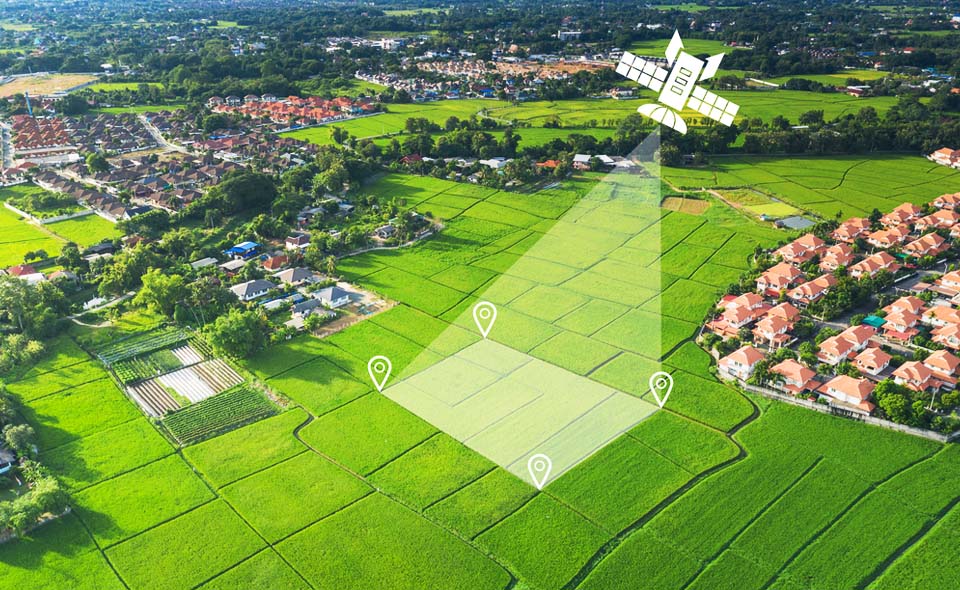In today’s fast-paced world, effective land management is more critical than ever. Land resources, whether for industrial projects, urban planning, or public utilities, form the backbone of economic growth and societal development. However, managing land assets is a complex and resource-intensive process. It requires precise planning, data-driven decision-making, and robust monitoring systems. Enterprises and Public Sector Undertakings (PSUs) often face challenges like fragmented records, legal disputes, underutilized assets, and compliance risks. Enter OxLand, a cutting-edge smart land management system that simplifies and optimizes land resource management for businesses and government entities alike.
The Challenges of Traditional Land Management
Traditional land management systems rely heavily on manual processes, decentralized data, and paper-based records. These systems not only hinder efficiency but also increase the likelihood of errors, disputes, and delays. Key challenges include:
1. Fragmented and Unorganized Records: Land records are often scattered across multiple departments, making it difficult to consolidate and verify information.
2. Legal and Regulatory Hurdles: Inconsistent or outdated records frequently lead to legal disputes and non-compliance with regulatory requirements.
3. Underutilized Land Assets: Without proper monitoring and analysis, enterprises often fail to maximize the potential of their land resources.
4. Lack of Real-Time Insights: Traditional methods do not provide real-time data, delaying decision-making processes.
5. High Costs and Inefficiencies: Manual operations and fragmented systems lead to increased administrative costs and resource wastage.
These challenges underscore the urgent need for a smart, integrated solution like OxLand.
What is OxLand?
OxLand is an advanced land management platform developed to address the unique needs of enterprises and PSUs. The system leverages cutting-edge technologies such as Geographic Information Systems (GIS), Artificial Intelligence (AI), and Blockchain to streamline land management processes. It acts as a centralized platform that integrates all aspects of land management, from record-keeping and compliance tracking to performance monitoring and decision-making.
Key Features of OxLand
Centralized Record Management
OxLand consolidates all land-related data into a single, user-friendly interface. This ensures that records are accurate, up-to-date, and easily accessible, reducing the risk of disputes and errors.
GIS Integration
With built-in GIS capabilities, OxLand provides real-time geospatial data, enabling users to visualize land boundaries, topographies, and resource allocations. This helps in better planning and decision-making.
Compliance and Risk Management
The platform tracks regulatory requirements and flags potential compliance issues, helping enterprises and PSUs mitigate risks proactively.
Performance Monitoring and Analytics
OxLand’s analytics tools enable users to assess the performance and utilization of land assets, identifying opportunities for optimization and growth.
Secure Data Management
Leveraging blockchain technology, OxLand ensures that all records are tamper-proof, transparent, and secure.
Customizable Dashboards
Users can personalize dashboards to display key performance indicators (KPIs) and metrics relevant to their specific needs, enhancing operational efficiency.
How OxLand Empowers Enterprises
1. Enhanced Operational Efficiency
By automating manual processes and integrating fragmented systems, OxLand significantly reduces the time and effort required for land management tasks. This allows enterprises to focus on their core operations.
2. Improved Decision-Making
The platform’s real-time data and analytics capabilities empower decision-makers with actionable insights. Enterprises can make informed decisions about land acquisitions, asset utilization, and future investments.
3. Cost Savings
Automation and centralized data management lead to significant cost reductions in administrative overheads, legal disputes, and compliance penalties.
4. Strategic Asset Utilization
With tools for performance monitoring and analytics, enterprises can identify underutilized land resources and develop strategies to maximize their value.
How OxLand Benefits PSUs
1. Transparency and Accountability
PSUs often manage vast land assets on behalf of the public. OxLand ensures transparency by maintaining accurate and accessible records, thereby promoting accountability.
2. Streamlined Regulatory Compliance
The platform’s compliance tracking features ensure that PSUs adhere to all legal and regulatory requirements, reducing the risk of penalties and public scrutiny.
3. Efficient Public Services
By optimizing land resources, PSUs can enhance the delivery of public services such as housing, transportation, and utilities.
4. Conflict Resolution
With tamper-proof records and real-time data, OxLand helps resolve disputes efficiently, minimizing delays in project execution.
Use Cases of OxLand
1. Urban Development Projects
OxLand’s GIS and analytics tools are invaluable for urban planning and development projects. They enable precise mapping of land parcels, resource allocation, and impact assessment.
2. Industrial Land Management
For enterprises managing industrial estates, OxLand ensures optimal utilization of land assets, streamlines compliance processes, and provides real-time monitoring.
3. Infrastructure Development
PSUs involved in infrastructure projects can use OxLand to identify suitable land parcels, monitor project progress, and ensure compliance with environmental and regulatory standards.
Conclusion
In an era where land is a precious resource, smart management systems like OxLand are revolutionizing how enterprises and PSUs manage their assets. By offering a comprehensive suite of tools for record management, compliance tracking, and performance monitoring, OxLand eliminates inefficiencies and unlocks the full potential of land resources.
Oxbow Intellect, the developers of OxLand, bring years of expertise and innovation to the table. With our robust platform and tailored solutions, we are empowering organizations to achieve operational excellence and sustainable growth. Choose OxLand and experience a smarter way to manage your land resources.





